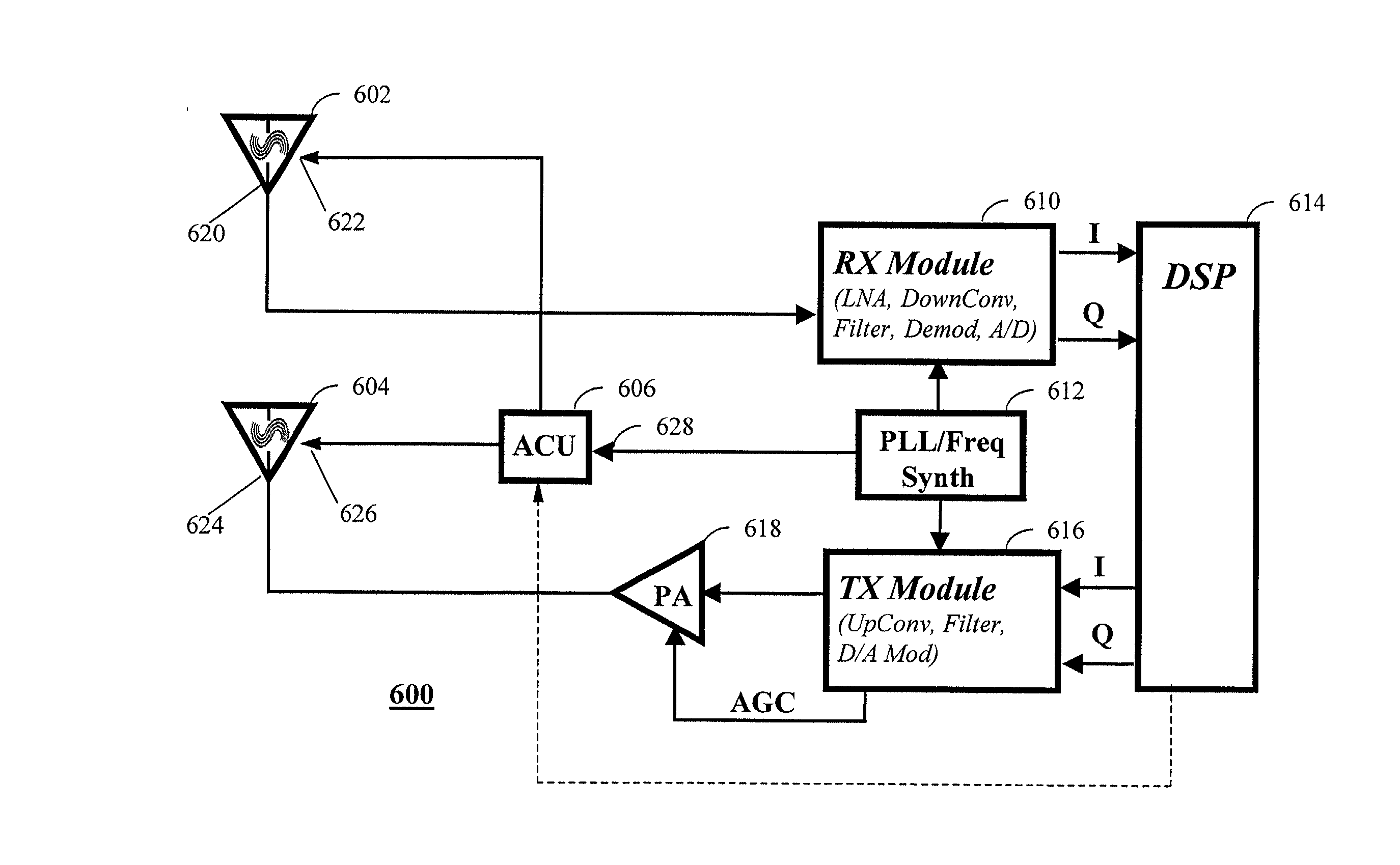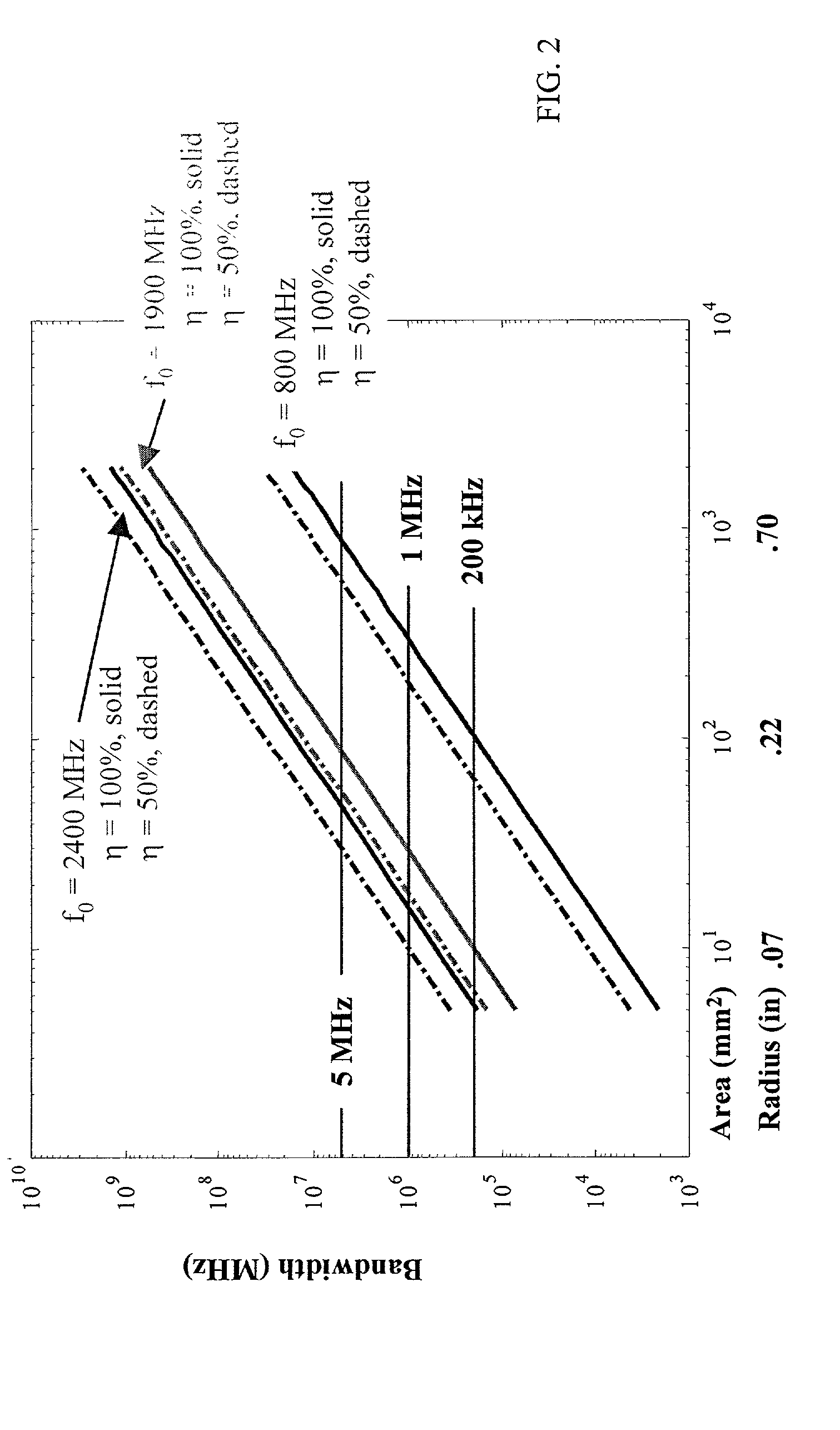Programmable radio frequency sub-system with integrated antennas and filters and wireless communication device using same
a radio frequency sub-system and integrated technology, applied in the direction of resonant antennas, substantially flat resonant elements, electromagnetic wave modulation, etc., can solve the problems of inability to meet the requirements of conventional antenna designs, imposed on the antenna of higher efficiency, and insufficient flexibility of the broader band and smaller size, etc., to achieve maximum flexibility, enhance user convenience, and enhance flexibility
- Summary
- Abstract
- Description
- Claims
- Application Information
AI Technical Summary
Benefits of technology
Problems solved by technology
Method used
Image
Examples
second embodiment
[0130] FIG. 14 is an elevation view of a programmable RF front end 1006. In the embodiment of FIG. 14, the device includes integrated, fixed frequency RF filters. Filter resonators 1402 are positioned between the transmit port 1122 and the transmit antenna feed and between the receive port 1120 and the receive antenna feed. The receive and transmit antennas are planar inverted F antennas (PIFAs) including a PIFA lid 1404 and a PIFA short 1406. In general, the antenna structure 1408 adjacent the lid 1404 is constructed from a low loss, low .epsilon..sub.r dielectric. The antenna structure 1410 containing the filter resonators 1402 is formed from a low loss and high .epsilon..sub.r dielectric material. The ACU electronics 606 are mounted on a low cost printed circuit board 1412.
[0131] FIG. 15 is a block diagram of an alternative embodiment of a an RF system 1500 of a programmable radio. In the embodiment of FIG. 15, the RF system 1500 includes a tunable receive antenna 602, a tunable ...
first embodiment
[0137] In an integrated directional coupler and power detector, the detector output signal is sampled by an analog to digital converter which is part of the antenna control unit 606 (FIG. 19). After conversion to digital data, the ACU 606 provides data representative of the detected forward power level to the controller 614 (FIG. 6) or other circuit of the radiotelephone. In another embodiment indicated by the dashed line in FIG. 19, an analog output signal indicative of the detected power level may be provided directly to the controller 614 (FIG. 6) of the radiotelephone. In response to this control signal, the controller 614 may adapt the transmit power level, for example, to conform to an air interface specification or Federal Communications Commission standards.
[0138] FIG. 17 is a block diagram illustrating a radio communication system 1700 including a fixed or base station 1702 and a mobile or portable handset or radiotelephone 1704. In one embodiment, the radio communication s...
PUM
 Login to View More
Login to View More Abstract
Description
Claims
Application Information
 Login to View More
Login to View More - R&D
- Intellectual Property
- Life Sciences
- Materials
- Tech Scout
- Unparalleled Data Quality
- Higher Quality Content
- 60% Fewer Hallucinations
Browse by: Latest US Patents, China's latest patents, Technical Efficacy Thesaurus, Application Domain, Technology Topic, Popular Technical Reports.
© 2025 PatSnap. All rights reserved.Legal|Privacy policy|Modern Slavery Act Transparency Statement|Sitemap|About US| Contact US: help@patsnap.com



